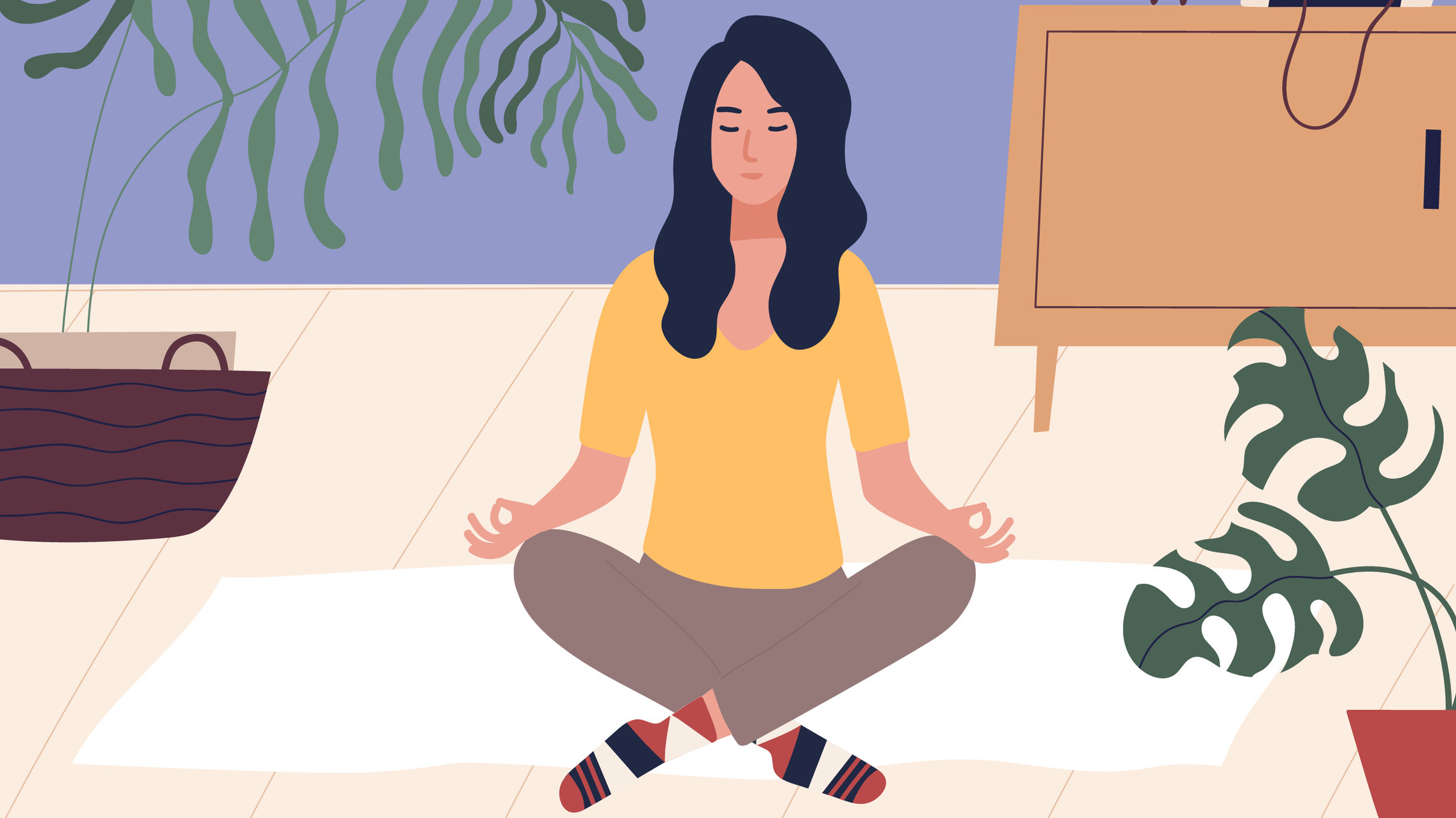
Meditation is one of the most popular treatments for headaches. Meditation reduces tension, which can lead to relaxation. This has been proven by researchers. Meditation can also help with migraines and headaches. It helps to pinpoint the source of pain. It can also help to reduce migraines or the daily occurrence of headaches by practicing this type of meditation.
Research has shown that meditation can help relieve the pain associated with a headache. Meditation has been shown to reduce headache pain by clearing negative thoughts from the mind and increasing focus. Several researchers have even found that people who practice meditation reported improvement in migraine-related disability and reduced pain intensity. There are two types: mindfulness and kundalini. Both practices work by allowing the person to disengage from all of his or her thoughts and feel better.

Meditation can be beneficial in relieving headache pain. However, people who have never done meditation before may find it challenging. Meditation requires that the practitioner sit still for long periods of uninterrupted time and is able to focus on the present moment. This can be intimidating for people who have not tried meditation, but there are many different techniques available to combat the pain and suffering of migraines. It is possible to start practicing meditation once you understand the basics.
A number of studies have shown that meditation has the potential to reduce migraine intensity and its duration. For instance, the Wake Forest Baptist Medical Center in North Carolina assigned 19 migraineurs to a stress-reduction program that included mindfulness meditation, yoga, and yoga. Each day, participants were required to practice 30 minutes of meditation. Although the benefits were not statistically significant, they did show shorter headaches. This could be a good choice for those suffering from chronic headaches.
Meditation can help with headache pain. But meditation also has other benefits. Meditating can help the body relax and reduce stress. It reduces migraine frequency and severity. It also increases your pain tolerance. One study saw 92 people being assigned to a mindfulness meditation program. The subjects of the study were taught to meditate for half an hour each day. These results were only visible after four weeks. However, the participants in control groups received no benefit.

Another study shows that meditation for headaches can help reduce the frequency and severity migraine attacks. Meditation can increase heart rate variability, which helps improve cardiovascular health, sleep quality and psychological resilience to stress. To reduce migraines, those with chronic headaches should meditate for headaches. It will make their lives easier and less stressful. It will also improve their mood. In addition to reducing the frequency and severity of their migraine attacks, meditating improves their overall health.
FAQ
What are 10 healthy behaviors?
-
Have breakfast every day.
-
Don't skip meals.
-
You should eat a balanced diet.
-
Drink lots of water.
-
Take good care of your body.
-
Get enough sleep.
-
Avoid junk food.
-
Do some exercise every day.
-
Have fun
-
Meet new people.
Is cold a sign of a weak immune response?
Cold causes a decrease in immune system strength. This is because white blood cells are less effective at fighting infection. Cold can also make you feel better as your body releases endorphins to your brain, which reduce pain.
Is being cold bad for your immune system?
There are two types of people in the world: those who love winter and those that hate it. It doesn't really matter whether you love winter or loathe it. You might be wondering why it makes you miserable.
The answer lies in the fact that our bodies are designed to function best during warm weather. We evolved to thrive in hot environments because of the abundance of food resources.
Now, however, we live in a completely different environment to how our ancestors lived. We spend more time indoors and are often exposed to extreme temperatures (cold or heat) and eat processed foods rather than fresh.
Our bodies don't have the ability to tolerate extremes. That means that when we do venture outdoors, we're left feeling tired, sluggish, and even sick.
There are ways to combat these effects though. Staying hydrated is one way to combat this. If you drink plenty of water, you'll help keep your body properly hydrated and flush toxins from your system.
It is important to eat healthy foods. Eating nutritious foods helps your body maintain its optimal temperature. This is especially helpful for people who spend a lot of time indoors.
You can also meditate for a few minutes every day. Meditation can relax your mind and make it easier manage stress and illness.
What should my weight be for my age and height? BMI calculator & chart
A body mass index calculator (BMI) is the best way to find out how much weight you should lose. The healthy BMI range for a healthy person is 18.5 to 24.9. You should lose about 10 pounds each month if you are trying to lose weight. Simply enter your height, weight and desired BMI into the BMI calculator to calculate it.
This BMI chart will help you determine if your body is overweight or obese.
How often should i exercise?
Fitness is key to a healthy lifestyle. But, you don't need to spend a specific amount of time exercising. It is important to find something that you enjoy and stay with it.
If you are working out three times a weeks, aim to do 20-30 minute of moderate intensity. Moderate intensity means that you will still be working hard even after your workout is over. This type of workout burns around 300 calories.
Walk for at least 10 minutes four days a weeks if you prefer walking. Walking is low-impact and easy on the joints.
Jogging for 15 minutes three days a week is a good option if you prefer to run. Running is an excellent way to lose weight and tone your muscles.
Begin slowly if your are not used to working out. Start with just 5 minutes of cardio a few times a week. Gradually increase duration until you achieve your goal.
What is the best food for me?
Your lifestyle and individual needs will determine the best diet for your body. You also need to consider how much energy you expend during exercise, whether you prefer low-calorie foods, and if you enjoy eating fruits and vegetables.
Intermittent Fasting is an alternative to traditional fasting if you are looking to lose weight. Intermittent eating means that you only eat specific meals throughout the day. This is in contrast to three large meals. This might be better for you than traditional diets, which have daily calorie counts.
Intermittent fasting is believed to increase insulin sensitivity. It may also reduce inflammation. This may lead to a decrease in diabetes risk and blood sugar levels. Research also shows that intermittent fasting may increase fat loss and improve overall physique.
How do I get enough vitamins for my body?
Your diet can provide most of your daily requirements. However, if you are deficient in any particular vitamin, taking supplements can help. You can purchase a multivitamin that includes all of the vitamins you need. You can also buy individual vitamins in your local drugstore.
If you are concerned about getting enough nutrients, talk to your doctor about what foods contain the best sources of vitamins. The best sources of vitamins K, E, and C are found in dark green leafy veggies such as spinach and broccoli, kale.
If you are not sure how much vitamin you should be consuming, ask your doctor. He or she will recommend the appropriate dosage based on your medical history and current health status.
Statistics
- WHO recommends reducing saturated fats to less than 10% of total energy intake; reducing trans-fats to less than 1% of total energy intake; and replacing both saturated fats and trans-fats to unsaturated fats. (who.int)
- According to the Physical Activity Guidelines for Americans, we should strive for at least 150 minutes of moderate intensity activity each week (54Trusted Source Smoking, harmful use of drugs, and alcohol abuse can all seriously negatively affect your health. (healthline.com)
- In both adults and children, the intake of free sugars should be reduced to less than 10% of total energy intake. (who.int)
- WHO recommends consuming less than 5% of total energy intake for additional health benefits. (who.int)
External Links
How To
How to Live a Healthy Lifestyle
A healthy lifestyle is one that allows you to maintain your weight, your health, and your fitness. It is a lifestyle that emphasizes healthy living. This includes exercising regularly, eating well, avoiding alcohol, smoking, tobacco, and drug abuse. A healthy lifestyle helps you stay fit and feel good about yourself. In addition, a healthy lifestyle reduces your risk of chronic diseases like heart disease, stroke, diabetes, cancer, osteoporosis, arthritis and many others.
This guide will help you live a healthier, more fulfilling life. The first part of the project consisted of writing the introduction, which explains what a healthy lifestyle is, why people should adopt a healthy lifestyle and who we are. The body paragraphs are a collection of tips for living a healthy life. Finally, I wrote the conclusion. This summarizes the entire article, and provides additional resources, if needed.
I was able to learn how concisely and clearly I could write my paragraphs through this assignment. Also, I learned how to organize my ideas into topic sentences and supporting details. Because I had to locate specific sources and properly cite them, my research skills improved. I learned proper grammar to write.